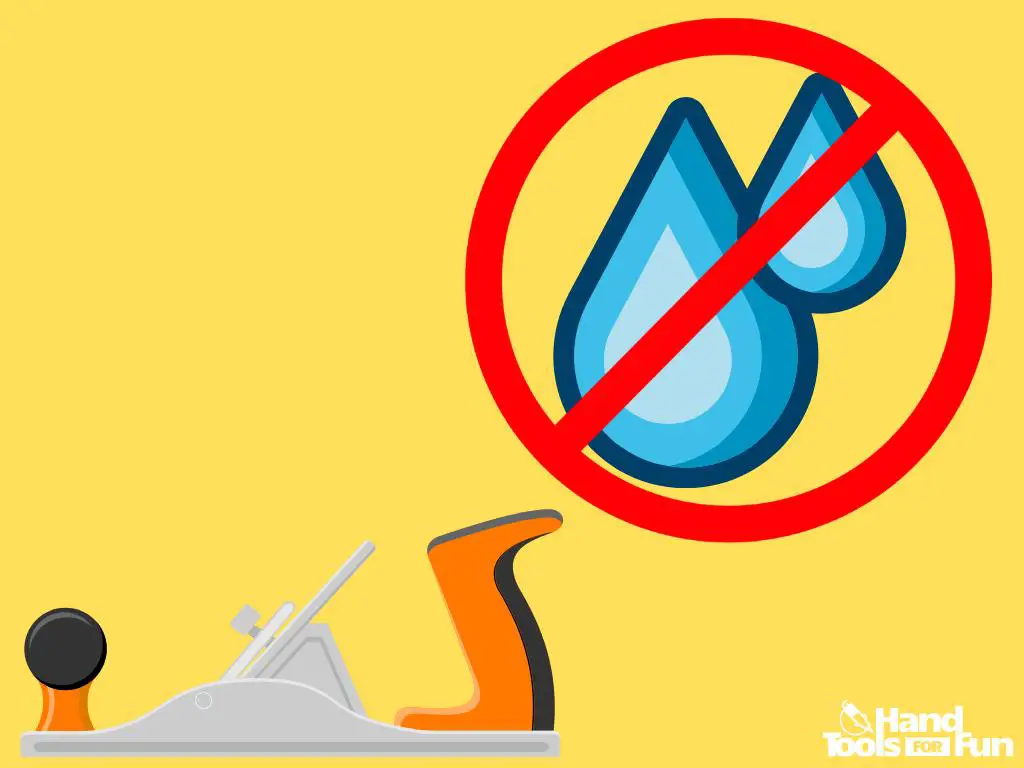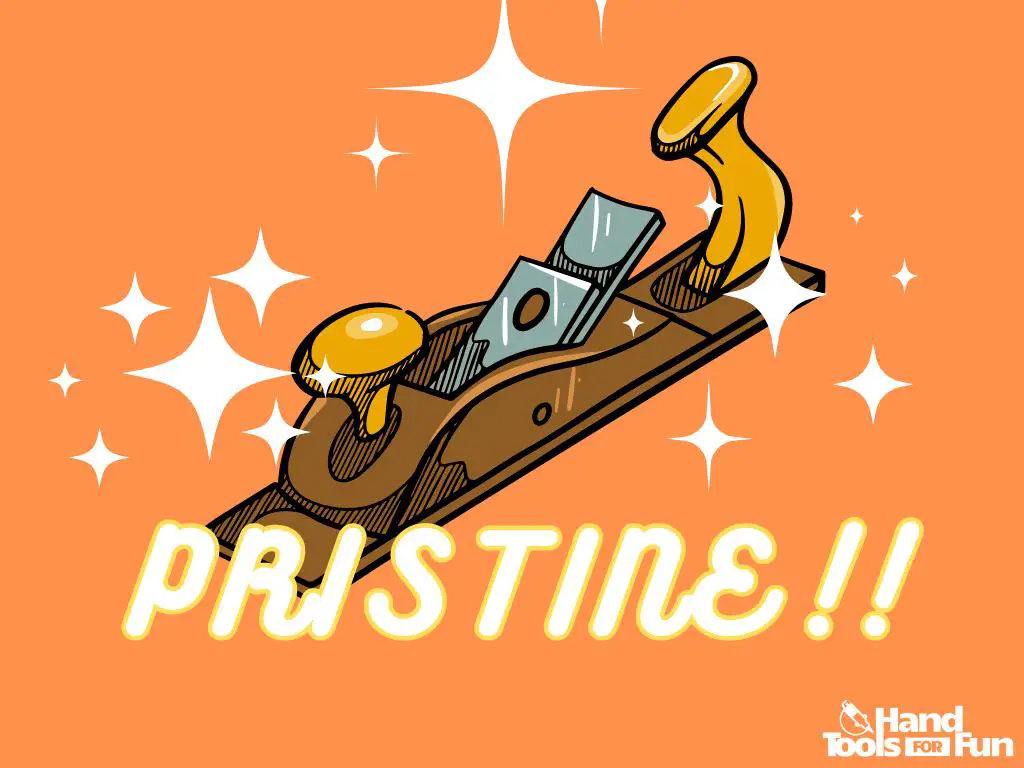For woodworking lovers and seasoned craftspeople alike, hand planes are invaluable tools that shape, smooth, and refine woodworking projects with precision and finesse.
To ensure these cherished instruments maintain optimal performance and longevity, it is essential to safeguard them against one of their most relentless enemies: rust.
By unraveling the intricacies of proper storage, regular maintenance, and the judicious use of rust inhibitors, this exploration aims not only to impart crucial knowledge but also to engender preventative practices that will keep hand planes in pristine condition.
With a proactive approach to care, the risks posed by moisture and oxidation can be significantly mitigated, ensuring that your hand planes remain an integral part of your woodworking arsenal for years to come.
Proper Storage
Protect Your Precious Hand Planes – Expert Tips for Rust-Free Storage!
For anyone with a passion for woodworking, hand planes hold a special place in the heart – and the workshop.
These precious tools are integral to shaping, smoothing, and giving wood that personal touch that only a hand-crafted approach can.
But as with any treasured instrument, the art of proper storage is key to ensuring these fine tools maintain their edge and functionality for years to come.
Here’s exactly how to store your hand planes to keep them rust-free and ready for action at a moment’s notice.

The Ideal Environment – Cool and Dry
First things first, it’s all about creating the right environment. Hand planes thrive in a cool, dry place.
This means keeping your workshop well-ventilated and using dehumidifiers if necessary. Excess moisture is the nemesis of metal and can quickly lead your tools down the dark, rusty path.
Protection with a Purpose
Before your planes go to rest, a light coat of oil will act as a protective barrier between the metal and any lurking moisture.
Camellia oil and mineral oil are popular choices amongst woodworking enthusiasts for their non-sticky, protective qualities. Apply a thin film using a soft, lint-free cloth to all metal parts of the plane.
Clothed for Comfort
If your planes are going to sit idle for a while, consider slipping them into plane socks or wrapping them in an old t-shirt.
This extra layer provides a shield from dust and moisture. Plus, it’s a great way to repurpose those tees you can’t bear to throw away!
A Spot of Silicone
Don’t underestimate the power of silicone tool mats or drawer liners. These nifty additions draw moisture away from your hand planes, further fortifying your rust prevention strategies. Lay them inside drawers or on shelving where you keep these tools.
Keep an Eye on the Prize
Regular check-ups are the hallmark of a true aficionado’s care routine. Inspect your stored planes periodically for signs of rust or wear.
Quick detection means easy intervention and a long and healthy life for your beloved blades.
Off the Ground and On the Shelf
Resist the urge to leave planes on a workbench. Instead, dedicated shelving or a tool cabinet with padded liners is the way to go.
Ensure your storage area is away from direct contact with concrete floors and walls, which can inadvertently conduct moisture and contribute to corrosion over time.

Smart Storage Solutions Galore
Beyond the basics, a variety of smart storage solutions await. Consider tool chests with built-in dehumidifiers or magnetic tool holders that keep your planes in place and off potentially damp surfaces. Such investments speak volumes about your commitment to this craft.
By following these straightforward tips, crafting aficionados around the globe are ensuring their hand planes stand the test of time, free from the grip of rust.
Embrace these practices, and the reward will be impeccably preserved tools ready to tackle any woodworking project you conjure up!
Regular Maintenance
Keep Your Hand Planes Gliding Smoothly: Routine Maintenance to Ward Off Rust
Keeping hand planes in tip-top shape isn’t just a matter of wiping them down after a day’s work, although that certainly helps.
Routine maintenance is the true unsung hero when it comes to preventing rust and ensuring these trusty tools have a lengthy and productive lifespan.
Imagine gliding a hand plane across wood, the shavings curling up like butter ribbons. It’s a joy that can quickly be dampened by the telltale reddish-brown patches of rust.
But fear not, with a few simple, yet crucial steps, this scenario is easily avoided.
First things first, tackle the potential for rust at its core by controlling humidity in the shop. Hygrometers aren’t just for weather buffs; they’re also perfect for monitoring workshop conditions.

Aim to keep the relative humidity below 50% if possible. This might mean running a dehumidifier in those swampier summer months or during rainy seasons.
Next, turn attention to the planes themselves. After each use, take a few extra moments for a quick clean. Remove wood dust and debris that could trap moisture against the metal.
A simple wipe with a dry cloth does wonders, but for the meticulous, a blast of compressed air ensures no nook or cranny goes neglected.
Once the planes are dust-free, a thin application of a rust inhibitor – not just any oil – onto all metal parts is essential.
Products specifically designed for hand tool protection offer the best shield against humidity. Apply it sparingly but thoroughly, using a lint-free rag to get a good coat.
It’s a barrier that’ll repay the favor every time the plane sails smoothly along a workpiece.
Furthermore, the plane’s sole, that lovingly lapped and polished surface, deserves special attention.
Consider using a rust preventative specifically formulated for fine tool surfaces. It’ll not only protect but also maintain that glass-smooth finish that makes planing a dream.
Moving parts can’t be ignored either. For the plane’s adjustments to remain smooth and precise, a spot of lubricant on threads and moving interfaces prevents both wear and the sneaky incursion of rust.
Precision oilers make the job easy and mess-free; a few drops on the adjuster wheel, lateral adjustment lever, and depth adjustment screw are all that’s needed.
Lastly, treat the chip breaker and blade as royalty. They are, after all, the heart of the plane’s function.
A little oil on the breaker’s flat side and the blade’s back prevents rust and promotes smooth operation.
Before reassembling the plane, take a moment to ensure that the oil covers every metal surface.
By incorporating these steps into a regular maintenance routine, rust won’t stand a chance. It’s about respect for the tools of the trade and preserving the pleasure of woodworking for years to come.
The goal is to make the next session as seamless and enjoyable as the last, with hand planes ready to perform at their best without the time-consuming hassle of removing rust.
Using Rust Inhibitors
Delving into rust inhibitors offers a treasure trove of options, but here’s the deal: for those dedicated souls seeking to maintain the pristine condition of their hand planes, knowing which rust inhibitors to use can be the line between preservation and degradation.
First up, consider the convenient aerosol sprays. Products like Boeshield T-9, developed by Boeing, pack a wallop against rust.
With its paraffin wax-based formula, T-9 goes on wet to penetrate and flush out old lubricants and grime, then dries to a thin, waxy, waterproof coating that clings to metal for months. It’s ideal for those intricate plane parts and is a breeze to apply.
If you prefer something with a bit more versatility, there’s always the CorrosionX. It’s a jack of all trades, functioning as a lubricant and a rust stopper.
Its fluid consistency makes it perfect for reaching into the nooks and crannies where rust loves to hide, forming a protective barrier that repels moisture and rust without creating a messy buildup.
For those adhering to environmentally friendly practices, products like CRC 3-36 are a must-try.
It’s a multi-purpose lubricant and anti-corrosive that’s less toxic and safe for the workplace. With it, you’re not only protecting your tools from rust, but also showing Mother Nature a bit of love.

But remember, the inhibitor is only as good as its application. After selecting your rust inhibitor, coat all metal surfaces — but don’t drench!
A thin, thorough coverage will suffice. Allow it to dry as per the manufacturer’s recommendations.
In particularly humid climes or during the damp seasons, consider reapplying more frequently to ensure continuous protection.
If you’re planning on keeping a plane unused for an extended period, wax can be an excellent choice to seal in the protection.
Paste waxes like Renaissance Wax provide a durable, long-lasting barrier against moisture but require a bit more elbow grease to apply.
They’re a favorite among museum conservators for protecting valuable metals and can work wonders on hand planes as well.
For those who love to blend tradition with protection, nothing beats a good ol’ camellia oil. As mentioned before, this time-honored protectant has been used for centuries by Japanese woodworkers to prevent rust on their prized tools.
It’s natural, non-toxic, and can provide a satisfactory layer of protection, especially when applied with a clean cloth and buffed lightly to a sheen.
While it’s easy to get lost in the myriad of products boasting the claim of “ultimate protection,” remember this: regular application—not the fanciest can on the shelf—is the true hero in the fight against rust. Keep those planes coated, and they’ll continue to cut a clean line for years to come.

Empowered with the right strategies for warding off rust, you stand poised to preserve the integrity and sharpness of your hand planes, effortlessly bridging the gap between routine upkeep and enduring craftsmanship.
As we’ve dissected the finer points of prevention and protection, it becomes clear that the rewards of diligence extend beyond the mere absence of rust; they resonate in every smooth glide of the plane and in the flawless finish of your work.
Your hand planes are more than tools—they are extensions of your craft—and by bestowing upon them the care they deserve, you honor both your skill and your legacy.


